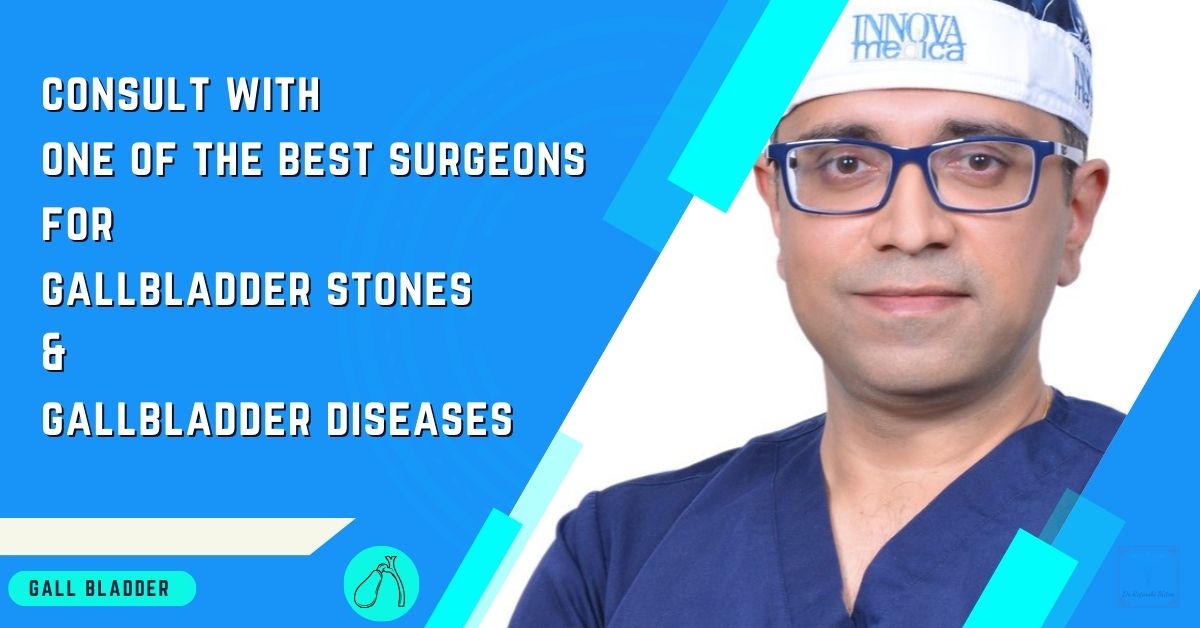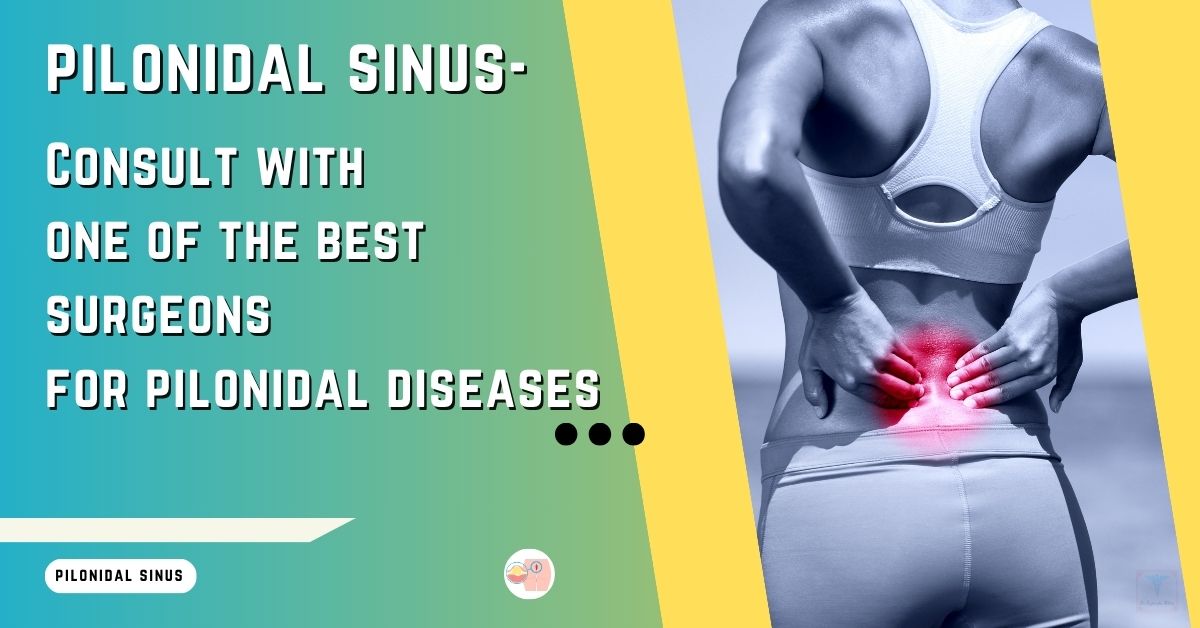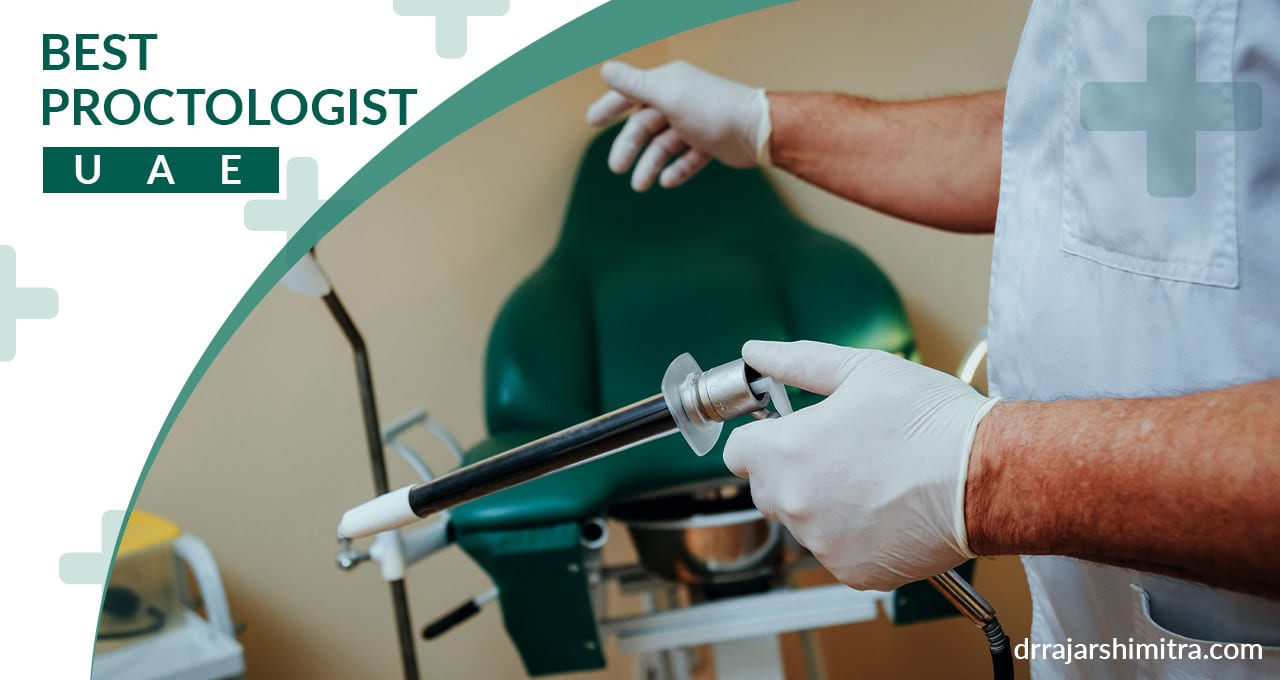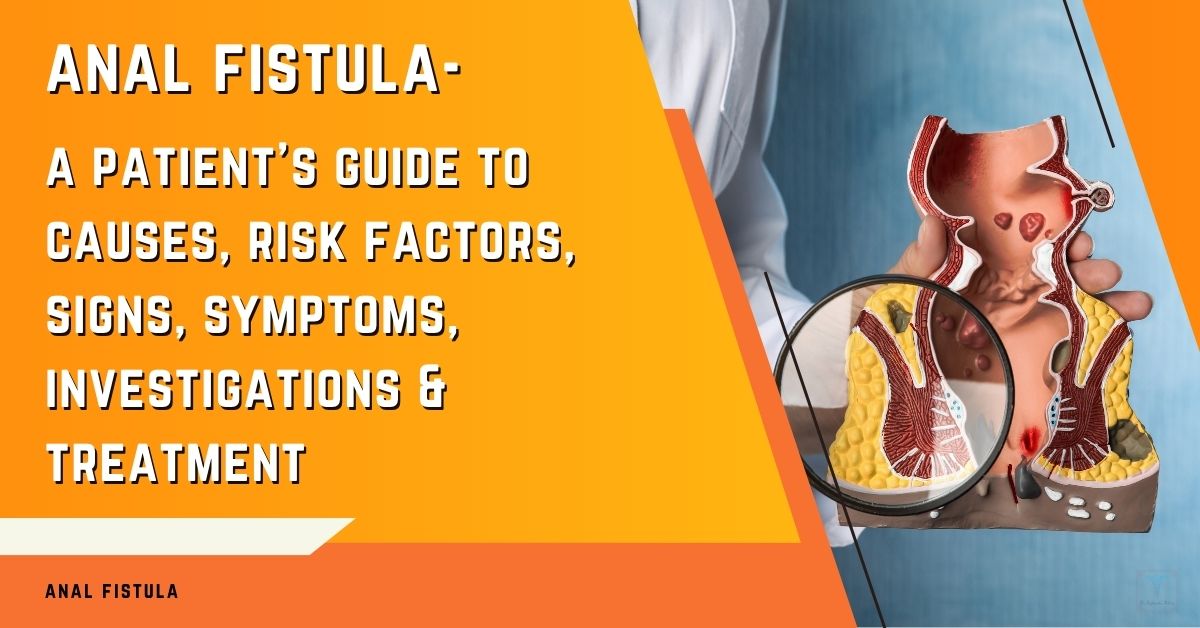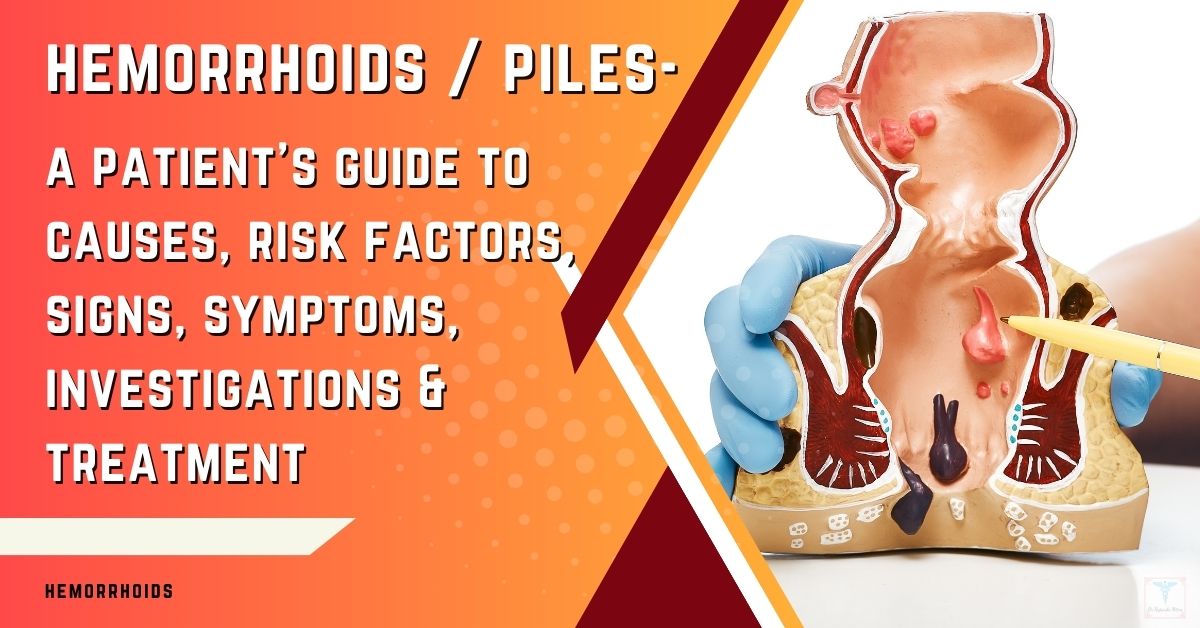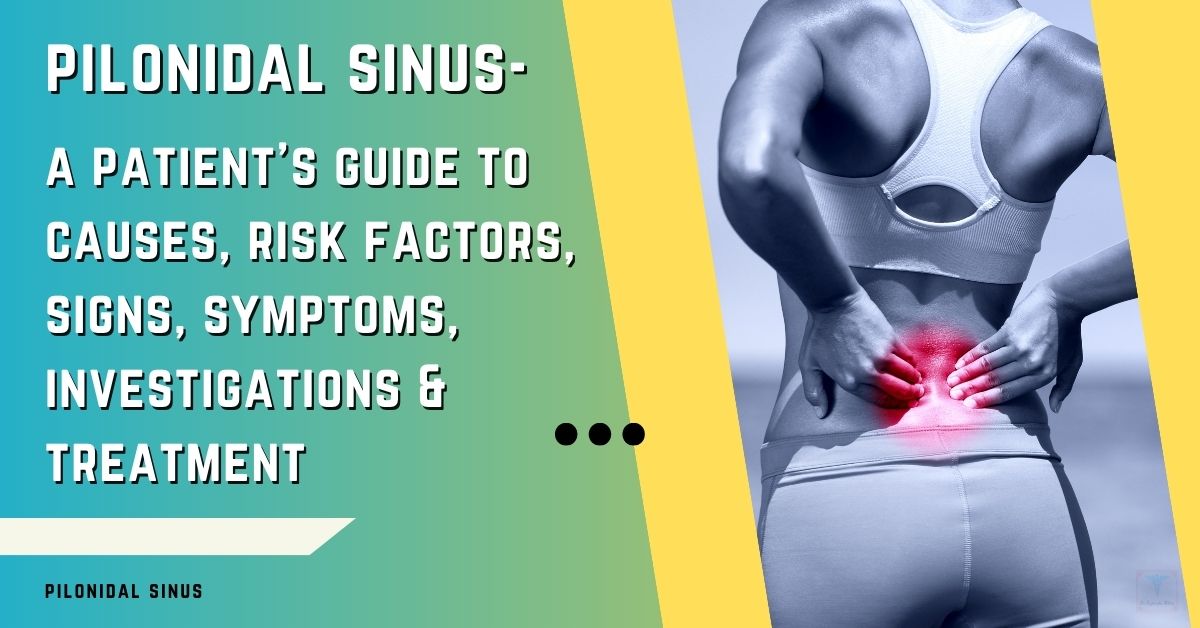What are GallBladder Stones or Gallstones?
Gallstones are hardened deposits of bile that form in the Gall Bladder.
The Gall Bladder(GB) is a small pear shaped organ on the right side of the upper abdomen, just below the Liver.
How do GallBladder Stones form?
Gallstones start forming when the cholesterol & the bilirubin start clumping together to form cluster or a solid lump.
Over a period of time, these stones can grow in size.
What are the Symptoms of GallBladder Stones?
The most common symptom of GallBladder stones is
- Pain in the upper abdomen
- Nausea on & off
- Bloating after meals
- Sense of fullness and heaviness in the upper abdomen
Who are at Risk of developing GallBladder Stones?
GallBladder Stones are usually seen in
- Overweight or Obese patients
- Females in the age group of 20-50yrs
- High Fat and Cholesterol diet
- Diabetic patients
- Patients on cholesterol lowering medications
- Patients who had a sudden loss of weight
What are the Complications of GallBladder Stones?
The following complications can be seen in patients with GallBladder Stones:
- Abdominal pain so intense that you can’t sit still or find a comfortable position
- Yellowing of your skin and the whites of your eyes
- High fever with chills.
When to see a Specialist Surgeon for GallBladder Stones?
Seek immediate care if you develop signs and symptoms of a serious gallstone complication, such as:
- Abdominal pain so intense that you can’t sit still or find a comfortable position
- Yellowing of your skin and the whites of your eyes
- High fever with chills.
What Investigations are required for GallBladder Stones?
- Tests to take Images of the GallBladder.
- Tests to check for stones in the Bile Duct.
- Blood Investigations.
What is the Treatment for GallBladder Stones?
Once GallStones are formed and they start causing symptoms, then Surgery is the mainstay of treatment.
Medical management for GallStones are usually done for the asymptomatic patients without any associated co-morbidities.
What is the best Surgery for GallBladder Stones?
Laparoscopic Cholecystectomy is the best recommended surgery for GallStones and is considered the gold standard treatment for GallStones worldwide.
What are Gall Bladder Stones and How do they Form?
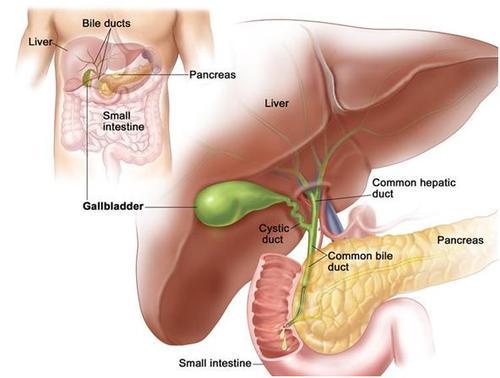
Gallstones are hardened deposits of bile that form in the Gall Bladder.
The Gall Bladder(GB) is a small pear shaped organ on the right side of the upper abdomen, just below the Liver.
The GB collects the Bile, a digestive fluid formed in the Liver, as it flows from the Liver to the Small Intestine.
The bile is a fluid that is made to help in digestion, esp. of the Fat in the diet.
The bile also contains cholesterol & bilirubin.
Gallstones start forming when the cholesterol & the bilirubin start clumping together to form cluster or a solid lump.
Over a period of time, these stones can grow in size.
What are the Symptoms of Gall Bladder Stones?
Most of the time these gallstones do not cause any symptoms and are usually detected when the patient gets an Ultrasound (USG) scan for some other unrelated problem.
These are known as incidentally detected Gallstones.
However, sometimes Gallstones can cause symptoms, if they get caught in the narrow outlet of the Gallbladder or in the narrow ducts which drain the Liver & Gallbladder and connect them to the small intestines.
If a gallstone lodges in a duct and causes a blockage, signs and symptoms may result, such as:
- Sudden and rapidly intensifying pain in the upper right portion of your abdomen
- Sudden and rapidly intensifying pain in the center of your abdomen, just below your breastbone
- Back pain between your shoulder blades
- Pain in your right shoulder
Gallstone pain may last several minutes to a few hours.
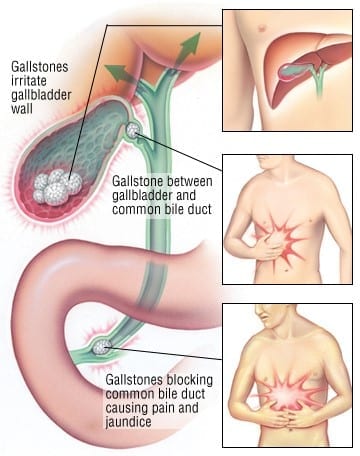
RISK FACTORS:
Factors that may increase your risk of gallstones include:
- Being female
- Being age 60 or older
- Being overweight or obese
- Being pregnant
- Eating a high-fat diet
- Eating a high-cholesterol diet
- Eating a low-fiber diet
- Having a family history of gallstones
- Having diabetes
- Losing weight very quickly
- Taking some cholesterol-lowering medications
- Taking medications that contain estrogen, such as hormone therapy drugs
Do remember that you may still have gall bladder stones even if you do not have any of the above mentioned risk factors. It is important to maintain a healthy lifestyle, as certain dietary choices and habits can influence the development of gallbladder stones. Incorporating gallbladder stones prevention tips, such as eating a balanced diet rich in fiber and healthy fats, can significantly reduce your risk. Additionally, staying hydrated and maintaining a healthy weight are crucial steps to help support your gallbladder health.
WHEN TO SEE A SURGEON
Make an appointment with your doctor if you have any signs or symptoms that worry you.
Seek immediate care if you develop signs and symptoms of a serious gallstone complication, such as:
- Abdominal pain so intense that you can’t sit still or find a comfortable position
- Yellowing of your skin and the whites of your eyes
- High fever with chills.
♦♦ COMPLICATIONS ♦♦
Complications of gallstones may include:
- Inflammation of the gallbladder: A gallstone that becomes lodged in the neck of the gallbladder can cause inflammation of the gallbladder (Cholecystitis). Cholecystitis can cause severe pain and fever.
- Blockage of the common bile duct: Gallstones can block the tubes (ducts) through which bile flows from your gallbladder or liver to your small intestine. Jaundice and bile duct infection can result.
- Blockage of the pancreatic duct: The pancreatic duct is a tube that runs from the pancreas to the common bile duct. Pancreatic juices, which aid in digestion, flow through the pancreatic duct. A gallstone can cause a blockage in the pancreatic duct, which can lead to inflammation of the pancreas (pancreatitis). Pancreatitis causes intense, constant abdominal pain and usually requires hospitalization.
- Gallbladder cancer: People with a history of gallstones have an increased risk of gallbladder cancer. But gallbladder cancer is very rare, so even though the risk of cancer is elevated, the likelihood of gallbladder cancer is still very small.
INVESTIGATIONS
Tests and procedures used to diagnose gallstones include:
Tests to create pictures of your gallbladder: Your doctor may recommend an abdominal ultrasound and a computerized tomography (CT) scan to create pictures of your gallbladder. These images can be analyzed to look for signs of gallstones.
Tests to check your bile ducts for gallstones: A test that uses a special dye to highlight your bile ducts on images may help your doctor determine whether a gallstone is causing a blockage. Tests may include a hepatobiliary iminodiacetic acid (HIDA) scan, magnetic resonance imaging (MRI) or endoscopic retrograde cholangiopancreatography (ERCP). Gallstones discovered using ERCP can be removed during the procedure.
Blood tests to look for complications: Blood tests may reveal an infection, jaundice, pancreatitis or other complications caused by gallstones.
SURGICAL TREATMENT FOR GALL BLADDER STONES
Laparoscopic Cholecystectomy is the gold standard worldwide and is the most commonly used procedure.
Compared to the open procedure, which involves a big incision, the Laparoscopic procedures entails only 04 tiny incisions ranging between 5mm to 10mm.
The advantage of the laparoscopic procedure is better visualization, more ergonomic operative procedure, less amount of post operative pain and earlier return back to daily activities.
LAPAROSCOPIC CHOLECYSTECTOMY
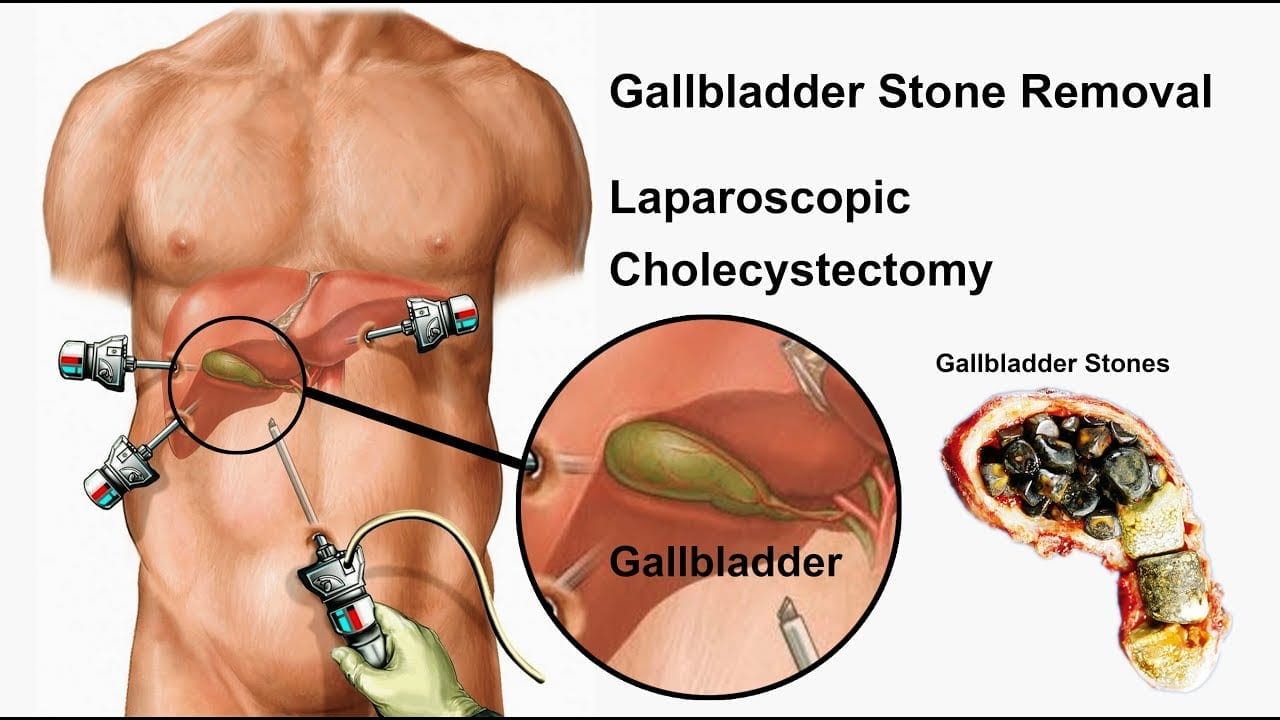
This picture compares the two most commonly used procedures for Cholecystectomy.
Surgical treatment for Gall Bladder stones involves Cholecystectomy, which is the removal of the Gall Bladder.
This can be done either in the traditional method known as Open Cholecystectomy or the current gold standard method known as Laparoscopic Cholecystectomy, Key Hole surgery for Gall Bladder.
Your doctor may recommend surgery to remove your gallbladder.
Once your gallbladder is removed, bile flows directly from your liver into your small intestine, rather than being stored in your gallbladder.
You don’t need your gallbladder to live, and gallbladder removal doesn’t affect your ability to digest food, but it can cause diarrhea, which is usually temporary.
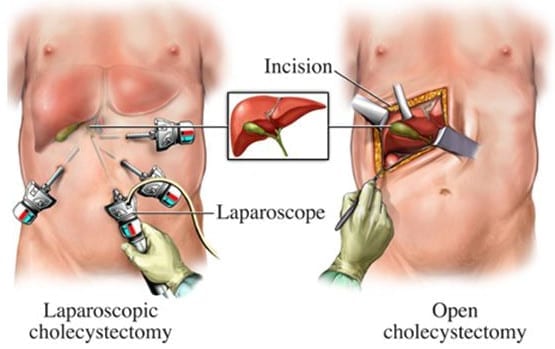
frequently asked questions by patients for gall bladder stones, gallstones and gall bladder surgery
What are Gall Bladder Stones?
Gall Bladder Stones or Gallstones, as they are commonly known, are hardened deposits of bile that form in the Gall Bladder. Gallstones start forming when the cholesterol & the bilirubin start clumping together to form cluster or a solid lump. Over a period of time, these Gallstones can grow in size.
Why do Gallstones form?
Gallbladder stones or gallstones, start forming when the wall of the bladder is not able to pump the bile out of the Gallbladder, resulting in the cholesterol & the bilirubin in the bile to start clumping together to form clusters or a solid lump. This can result in either a single large gallstones or multiple small gallstones.

